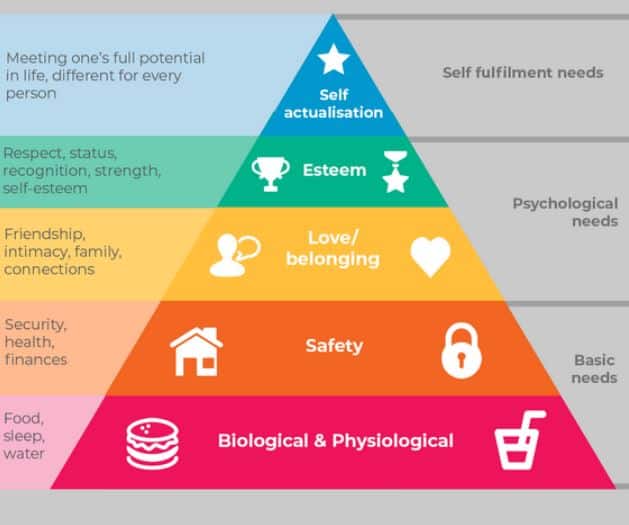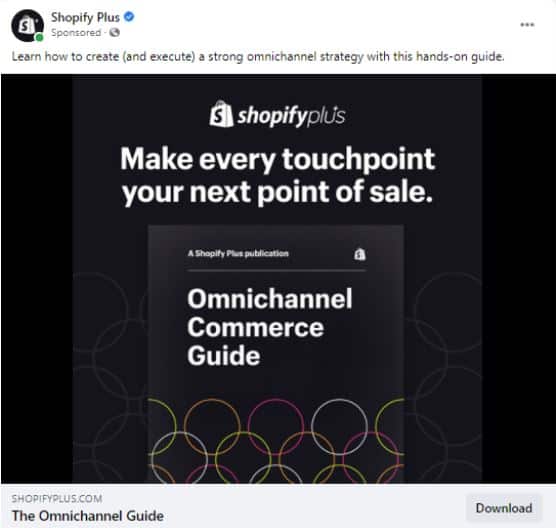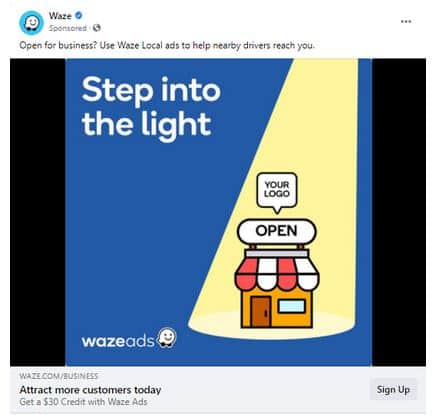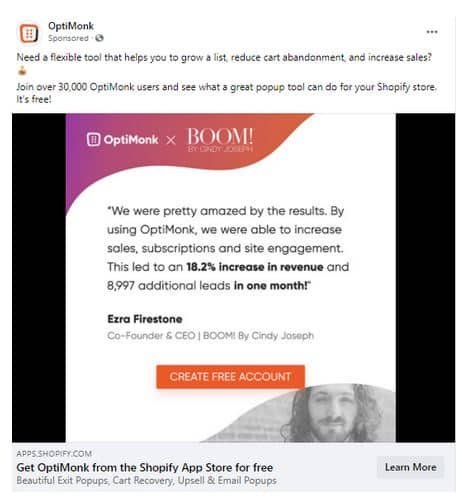
Campaign Creators / Unsplash
Whether you’re a veteran marketing professional or you’re transitioning to the industry for the first time, your campaigns need to have a solid foundation in marketing theories. Based on customers’ desires and motivations for taking action, these concepts help us understand basic fundamental truths about the impact of marketing.
The most effective marketing theories are based on real-life observations and are useful not just for marketing but also for many different aspects of business. Agencies, such as a custom design web agency or a social media advertising agency, usually uses a multi-pronged approach for campaigns, influenced by different marketing theories and personal experiences with marketing.
Today, we will discuss six theories that can help you understand your customers and create campaigns that address their needs.
Table of Contents
Maslow’s Hierarchy of Needs
Some of you might remember this one from your college psychology class. The five-stage Maslow’s Hierarchy of Needs classifies needs according to five categories: biological, safety, love or belonging, esteem, and self-actualization. This theory states that humans need to satisfy the most basic needs of survival before moving on to higher-level needs.

Source: professionalacademcy.com
In social media marketing, this means you need to understand the level of hierarchy your customer is likely to be in when they’re interacting with your brand. There’s no point marketing through the lense of self-actualization to people who are trying to achieve a sense of security. In other words, which of the five needs are your customers looking to fill when they interact with you? It’s likely to be one of the top three in most cases.
The needs people are looking to meet with social media usage can be different depending on the platform, and you should tailor your content accordingly. For example, many people use platforms like Facebook and Instagram to connect with friends and family, fulfilling the “belonging” need. LinkedIn, on the other hand, tends to be used by people trying to find jobs, build their professional networks, or check out new solutions for work-related concerns. This could fit anything from “safety” (needing a job to pay the rent) to “self-actualization” (achieving a dream).
Decide which one applies to your target audience on each particular platform and plan your content to reflect that.
Seven P’s of the Marketing Mix
The concept of the marketing mix has been around since 1960, when the original four P’s — product, place, price, and promotion — were first used to analyze and create marketing campaigns.
This marketing theory has since been expanded to seven P’s, with the addition of people, processes, and physical evidence. This expanded version allows marketers to use the theory to create campaigns for services. Some digital marketing specialists even add an eighth P, productivity and quality, to reflect how businesses pass on productivity and value to their customers.

Shopify / Facebook
Shopify, pictured above, offers more than just a way for merchants to sell products online (product). It also produces guides and resources for its customers to help them improve their e-commerce stories (physical evidence).
This social media campaign works because it does not only promote the brand and product, but it also adds value to the product (promotion, price) by giving its readers ideas to increase sales and make more money from their Shopify stores. This campaign ticks off at least four of the seven P’s in the Marketing Mix theory. Always aim to hit at least three of the seven P’s in each of your social media campaigns — the more the better!
SWOT Analysis
If you’ve ever worked in a role that required strategic planning, you are probably familiar with the SWOT (strengths, weaknesses, opportunities, threats) analysis. This theory can be widely applied to almost any marketing campaign, and we recommend you use it periodically to assess how things are going and where your efforts could be fine-tuned.
At its simplest form, you identify the strengths and weaknesses of your product, service, or campaign, and then identify the opportunities and threats it faces. The first two factors are internal while the last two are external.
Aim to identify the following:
- Strengths: what your product or company does well
- Weaknesses: what your product or company doesn’t do very well
- Opportunities: what new technologies or markets are in the pipeline for your brand
- Threats: what your competitors have that you don’t
Remember that opportunities, threats and strengths, weaknesses are not mutually exclusive. Something can easily fall into more than one category.
Let’s look at this example:

Waze / Shopify
This Facebook ad for Waze presents an opportunity for local businesses to list themselves on the platform, bringing more new users to Waze. Many businesses have closed due to COVID-19, and those that have stayed open have had trouble attracting customers. This could be identified as both an opportunity (more businesses will be doing delivery, putting them in the market for Waze’s services), and a threat (many companies are tightening their budgets and losing money).
Whenever you start and finish a big social media campaign, run a SWOT analysis to project how you think it will go and then analyze how it actually went.
Consumer Decision Making Process
Marketers use the Consumer Decision Making Process to understand how a buyer makes decisions, from the moment they are first exposed to a brand or product to the point of purchase. It can be divided broadly into five sections:
- Awareness: The customer becomes aware of a problem they need to solve or a need they want to satisfy.
- Interest: The customer starts looking around and researching potential products or solutions.
- Consideration: The customer has trimmed down their choices and is debating the pros and cons of each choice. They eventually make a choice based on factors like quality, price, or previous experience with the brand.
- Purchase: Armed with enough knowledge, the customer is now able to justify making a purchase. They go to the sales platform for the product, add it to their cart, and click on “Buy Now.”
- Loyalty: Many customer journeys end with the purchase stage. However, providing an excellent post-purchase experience is crucial to ensuring that the customer will make another purchase in the future or will recommend your product to others. This is where loyalty begins.
If this seems familiar, that’s because these stages are similar to a typical customer marketing funnel.
The content you put on social media serves different purposes at different funnel stages. For example, the way you’ll engage with your audience when you’re trying to attract brand new customers is different to how you’ll interact when you’re aiming to build loyalty with existing fans. Customers just becoming aware of your product need a different approach to those who are almost ready to buy. Therefore, you must be crystal clear on which step in the decision making process you’re targeting with each social media post.
Here’s an example:

Facebook / Optimonk
This Facebook ad for Optimonk acknowledges that Shopify sellers need help with driving traffic to their stores (i.e. the customer is aware of the problem they need to solve). It then suggests the Optimonk pop-up tool as a solution and invites ad viewers to learn more about the tool. This ad is an example of great top-of-funnel content, as it raises awareness then gives the user an inside peek into the tool’s capabilities.
Porter’s Five Forces
The Porter’s Five Forces model is one of the marketing theories that are most widely taught in professional marketing courses. Just like the SWOT analysis method, it looks at various forces that can affect a brand and its marketing. However, it differs from SWOT in that it focuses solely on external factors. Let’s look at each of the five forces:
- Competition: This includes the number of competitors in the space you’re trying to gain a foothold in, the resources they have, their customers’ loyalty, and your own competitive strategy.
- New Entrants: This is particularly important when you’re trying to introduce a new product or maintain your leadership spot. You will need to consider barriers to entry, government policies (such as franchising laws), and industry monopolies.
- Substitution: While “substitution” normally means replacing a product with something similar, it actually refers to an entirely different product in this context. For example, instead of buying a traditional gas-guzzling car, you choose to buy a Tesla. This means you will have to consider the cost of switching (such as installing a charging station at home) and whether there are any real differences between two or more products (in this case, performance and emission levels).
- Suppliers: Your product won’t exist without suppliers. With the pandemic disrupting logistics and supply chains all over the world, the essential role of suppliers has become even more apparent. Don’t forget that you can shop around between suppliers and negotiate the best prices.
- Buyers: Your buyers are the single most influential of the five forces. They will determine whether your product is too expensive or if it’s worth what it costs. You will need to study your buyers’ preferences, their ability to pay, and the things they consider before they make a purchase.
You can apply Porter’s Five Forces even if your product isn’t quite like anything else currently on the market. That’s because someone will eventually find a way to make a cheaper product that serves the same or a similar purpose. But how does this apply to social media?
Since Porter’s Five Forces is all about external pressures, you need to find a way to position your product as a uniquely beneficial solution for your audience. Here’s an example:

Facebook / eToro
A trading platform called eToror has a business model that revolves around removing barriers to entry when it comes to investing. This company’s ad emphasizes the ease of getting started and the ability to learn the art of trading by copying what top investors do. In other words, would-be investors can get started right away instead of spending a lot of time studying the stock market. This is good news for the user and good news for eToro.
When you think of Porter’s Five Forces, you should be considering your unique selling proposition (USP). What makes your company or product different from anything else on the market? Identify your competitive advantage and make the most of it.
Market Segmentation
Though you might want to claim that your product is “for everyone,” if you find yourself saying this then you might want to revisit your marketing strategy. Nothing is for everybody! This implies that your product lacks something to make it appealing to a specific audience and therefore is likely to be very generic. While focusing on a smaller market section might seem counterintuitive, market segmentation will help your business get the most out of its marketing dollar.
This process has three steps: segmentation, targeting, and positioning. The first one is pretty straightforward: It involves finding out who your customers are and dividing your potential customer base into different segments based on demographics, location, topics of interest, or behaviors. Targeting involves choosing the market segment that is most likely to respond to your marketing, while positioning involves looking for gaps in the market that your brand could fill. Many CRM systems allow you to segment your audience for email marketing purposes. But did you know you can use segmentation on social media, too?
Performing market segmentation will help you identify the best content for your audience and the platform you’ll be sharing that content on. HostGator, for example, maintains a presence on both Facebook and LinkedIn, but the content the company posts on either platform couldn’t be any more different. Here is its Facebook ad:

Facebook / HostGator
HostGator clearly did its homework with market segmentation and discovered that its audience on Facebook was a younger and less serious crowd. Using a meme-style cartoon strip and informal language worked perfectly for that demographic. Meanwhile, the company took a far more serious, technical approach to appeal to LinkedIn users, who tend to be business people and senior-company decision makers:
In other words, use market segmentation to determine who and where your target audience is, then choose the tone and theme of your social media posts accordingly.
Wrapping up
The marketing theories discussed above will help provide insight into your target audience, your competition, and the threats and opportunities facing your company. All of these can help you create social media marketing campaigns that result in more clicks, leads, and conversions. As you grow into your role as a social media marketer, using marketing theories to underpin your campaigns will become second nature.
